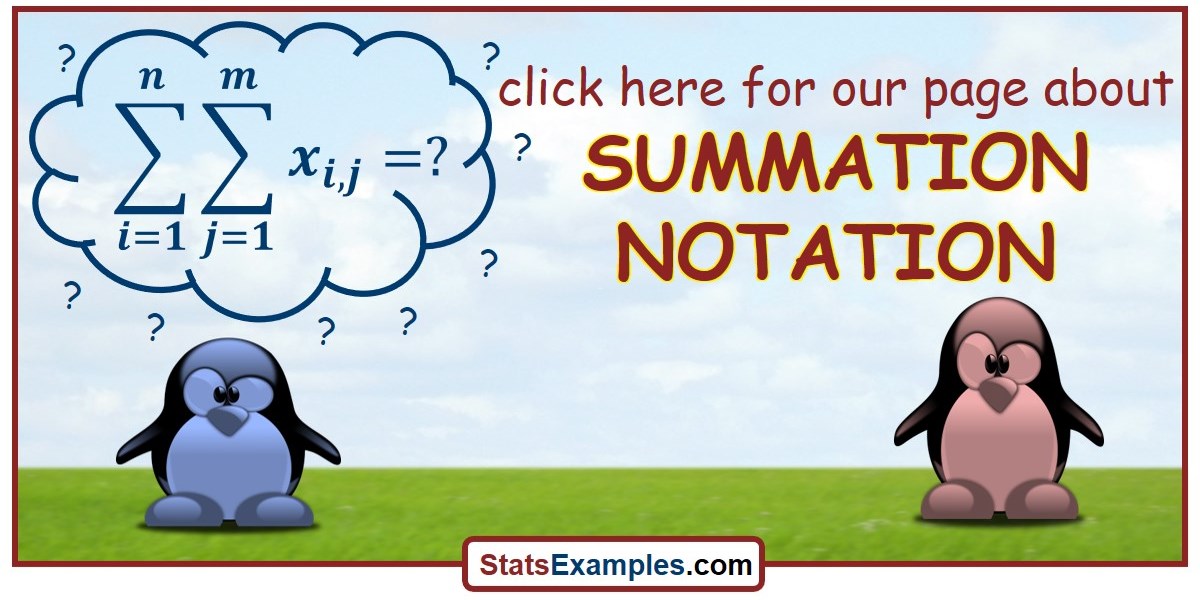STATISTICAL TOPICS
BASICS
 Intro to Statistics
This page introduces the main concepts in statistics: descriptive statistics to summarize a data set, inferential statistics to answer questions about populations based on sample data, and a bit about three other approaches to statistics.
Intro to Statistics
This page introduces the main concepts in statistics: descriptive statistics to summarize a data set, inferential statistics to answer questions about populations based on sample data, and a bit about three other approaches to statistics.
PROBABILITY
 Intro to probability
This page talks about the basics of how we compute probabilities. This includes the probabilities of combinations of two events: (1) the probability of event A or B; (2) the probabilty of event A and B. It also briefly describes Bayes' Theorem. Lots of examples are provided.
Intro to probability
This page talks about the basics of how we compute probabilities. This includes the probabilities of combinations of two events: (1) the probability of event A or B; (2) the probabilty of event A and B. It also briefly describes Bayes' Theorem. Lots of examples are provided.
 The Binomial distribution
These pages explain the scenario that the binomial probability distribuition models, the assumptions required for using the equation, and give step-by-step examples of how to use the equation.
The Binomial distribution
These pages explain the scenario that the binomial probability distribuition models, the assumptions required for using the equation, and give step-by-step examples of how to use the equation.
CONFIDENCE INTERVALS
STATISTICAL TESTS
 One Sample T-test
This page describes how the one sample t-test can be used to test hypotheses about a population mean: including the conceptual model, how the t-distribution is used, one-tailed or two-tailed tests, and several example calculations.
One Sample T-test
This page describes how the one sample t-test can be used to test hypotheses about a population mean: including the conceptual model, how the t-distribution is used, one-tailed or two-tailed tests, and several example calculations.
 Two Sample T-test
This page describes how the two sample t-test can be used to test for the equality of pair of population means: including the conceptual model, how the t-distribution is used, one-tailed or two-tailed tests, and several example calculations.
Two Sample T-test
This page describes how the two sample t-test can be used to test for the equality of pair of population means: including the conceptual model, how the t-distribution is used, one-tailed or two-tailed tests, and several example calculations.
 Variance Ratio F-test
This page describes how the two sample t-test can be used to test for the equality of pair of population variances: including the conceptual model, how the F-distribution is used, one-tailed or two-tailed tests, and several example calculations.
Variance Ratio F-test
This page describes how the two sample t-test can be used to test for the equality of pair of population variances: including the conceptual model, how the F-distribution is used, one-tailed or two-tailed tests, and several example calculations.
ANOVA and CORRELATION
OTHER TOPICS
 Type I and II errors
This page explains the two main types of statistical errors: type I (where we reject a true null hypothesis) and type II (where we accept a false null hypothesis. The metaphor of the US justice system is used to make this clear.
Type I and II errors
This page explains the two main types of statistical errors: type I (where we reject a true null hypothesis) and type II (where we accept a false null hypothesis. The metaphor of the US justice system is used to make this clear.
Connect with StatsExamples here
This information is intended for the greater good; please use statistics responsibly.











